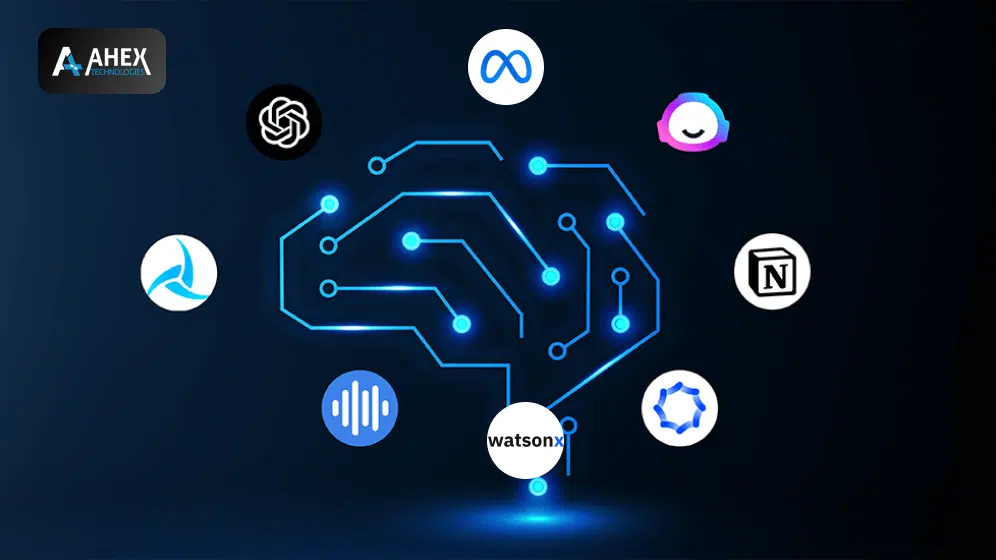
In today’s rapidly evolving technological landscape, harnessing the power of artificial intelligence (AI) has become indispensable for businesses looking to stay competitive. Whether you’re developing AI applications in-house or seeking a trusted AI development partner, selecting the right AI platform is a critical decision that can impact the success of your projects. In this comprehensive guide, we’ll explore the options available with leading AI platforms such as OpenAI, Azure AI, WatsonX, and Llama, empowering you to make informed choices tailored to your unique needs and objectives.
Understanding the Importance of Choosing the Right AI Platform
Choosing the right AI platform is a kin to laying the foundation for your AI initiatives. It determines the tools, resources, and capabilities at your disposal, influencing the performance, scalability, and cost-effectiveness of your AI projects. By selecting the most suitable platform, you can unlock the full potential of AI to drive innovation, enhance customer experiences, and achieve strategic business objectives.
Exploring the Leading AI Platforms
OpenAI
Overview: OpenAI is a renowned AI research laboratory dedicated to advancing artificial intelligence in a safe and ethical manner. It offers a range of cutting-edge AI technologies, including language models, reinforcement learning algorithms, and natural language processing tools.
Key Features:
GPT (Generative Pre-trained Transformer) Models: OpenAI’s GPT models are widely acclaimed for their ability to generate human-like text and perform a variety of language-related tasks, such as text generation, translation, and summarization.
OpenAI Gym: An open-source platform for developing and comparing reinforcement learning algorithms, enabling researchers and developers to train AI agents in simulated environments.
Azure AI (Microsoft Azure)
Overview: Azure AI is Microsoft’s comprehensive suite of AI services and tools available on the Azure cloud platform. It offers a wide range of AI capabilities, including machine learning, cognitive services, and conversational AI.
Key Features:
Azure Machine Learning: A cloud-based service for building, training, and deploying machine learning models at scale, with support for a variety of frameworks and languages.
Azure Cognitive Services: Pre-built AI models for vision, speech, language, and decision-making, enabling developers to add intelligent capabilities to their applications with minimal effort.
WatsonX (IBM Watson)
Overview: WatsonX is IBM’s AI platform powered by Watson, a cognitive computing system renowned for its ability to analyze large volumes of data, understand natural language, and generate insights.
Key Features:
Watson Studio: A comprehensive platform for data scientists, developers, and domain experts to collaborate on AI projects, including data preparation, model development, and deployment.
Watson Assistant: A conversational AI platform that enables businesses to build and deploy chatbots and virtual assistants to engage with customers and employees.
Llama
Overview: Llama is a newer entrant to the AI platform market, offering a range of AI development tools and services designed to simplify the process of building and deploying AI applications.
Key Features:
Llama Studio: An intuitive AI development environment that streamlines the creation of AI models, from data ingestion and preprocessing to model training and deployment.
Llama Marketplace: A curated marketplace where developers can access pre-trained models, datasets, and AI algorithms to accelerate their AI projects.
Factors to Consider When Choosing an AI Platform
1. Capabilities and Use Cases:
Evaluate the platform’s capabilities and determine whether they align with your specific use cases and business objectives. Consider factors such as natural language processing, computer vision, predictive analytics, and reinforcement learning.
2. Scalability and Performance:
Assess the platform’s scalability and performance to ensure it can handle your organization’s current workload and accommodate future growth. Look for features such as auto-scaling, high availability, and low latency.
3. Ease of Use and Integration:
Consider the platform’s ease of use and integration with your existing systems and workflows. Look for intuitive interfaces, comprehensive documentation, and support for popular programming languages and frameworks.
4. Security and Compliance:
Prioritize platforms that offer robust security features and compliance certifications to protect sensitive data and ensure regulatory compliance. Look for features such as data encryption, access controls, and audit trails.
5. Cost and Pricing Model:
Evaluate the platform’s pricing model and total cost of ownership to ensure it aligns with your budget and financial goals. Consider factors such as subscription fees, usage-based pricing, and hidden costs.
Conclusion
Choosing the right AI platform is a strategic decision that requires careful consideration of your organization’s objectives, requirements, and constraints. By exploring the options available with leading AI platforms such as OpenAI, Azure AI, WatsonX, and Llama, and considering factors such as capabilities, scalability, ease of use, security, and cost, you can select the platform that best fits your needs and empowers you to unlock the full potential of artificial intelligence for your business.
Remember, the journey to AI success doesn’t end with platform selection—it’s just the beginning. Continuous learning, experimentation, and adaptation are essential to harnessing the transformative power of AI and driving innovation in your organization. Choose wisely, embrace the possibilities, and embark on a journey of AI-driven growth and success.







